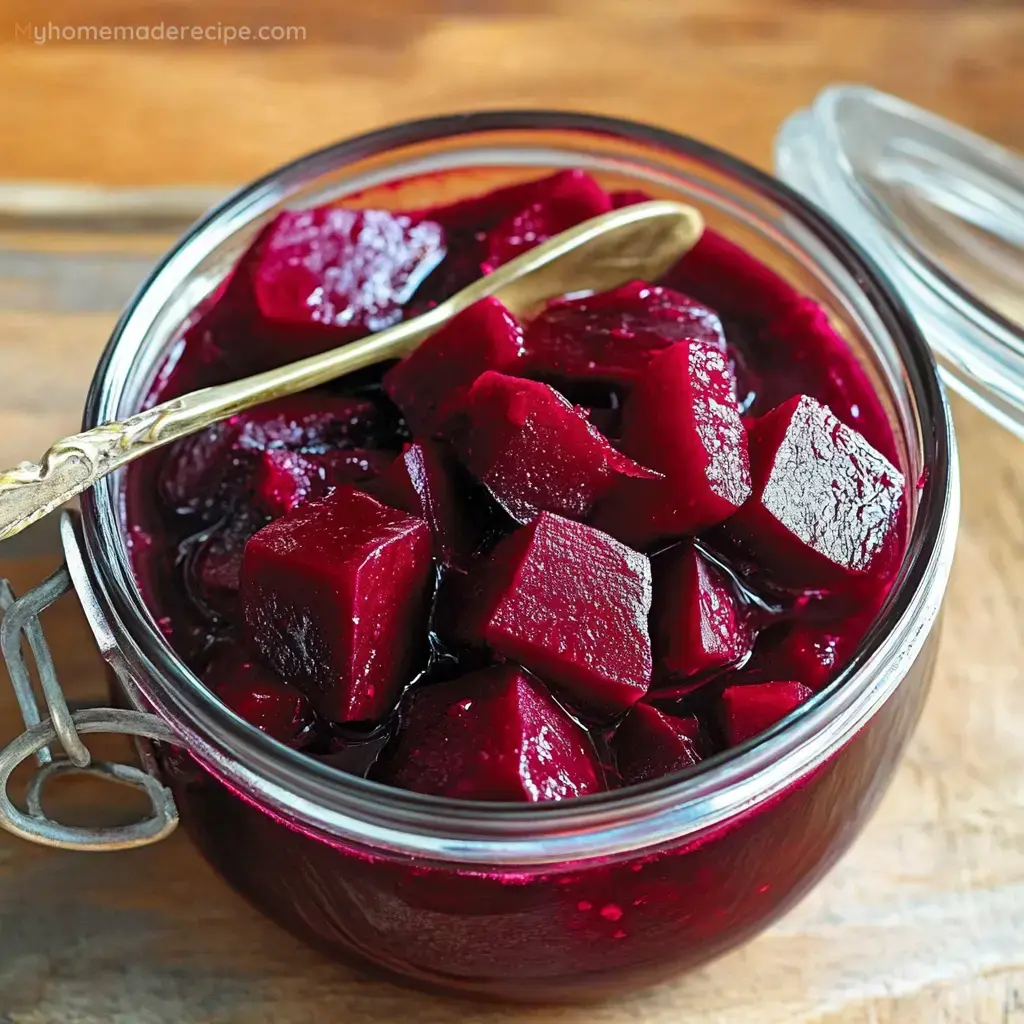 Pin it
Pin it
This vibrant ruby-red pickled beets recipe transforms ordinary beets into a tangy, sweet delicacy that brightens any meal. The simple pickling process preserves the earthy goodness of fresh beets while adding complexity that makes them irresistible.
I discovered this recipe during my grandmother's annual harvest pickling weekend. After helping her make these beets as a child, the vivid color and distinctive aroma still transport me back to her cozy farmhouse kitchen every time I prepare them.
Ingredients
- Fresh medium beets: Choose firm beets with smooth skin and vibrant greens still attached for the freshest flavor
- White vinegar: Creates the perfect tangy base for the pickling liquid
- Sugar: Balances the acidity and enhances the natural sweetness of the beets
- Whole cloves: Adds a warm aromatic note that complements the earthiness of beets
- Whole allspice: Provides complex spice notes that deepen the flavor profile
- Salt: Enhances all the flavors and helps preserve the beets
Step-by-Step Instructions
- Prepare the beets:
- Thoroughly scrub each beet under cool running water to remove any dirt. Trim the tops to about 1 inch but leave the root ends intact to prevent color bleeding during cooking. Place in a Dutch oven, cover completely with water, and bring to a rolling boil. Reduce heat to medium low and simmer covered for 25–30 minutes until the beets yield easily when pierced with a fork.
- Cool and peel:
- Remove the beets from the hot water using tongs and allow them to cool on a cutting board until comfortable to handle. Once cooled, the skins should slip off easily with gentle pressure from your fingers or a paper towel. Cut off the root end and remaining stem top, then slice the beets into uniform quarter-inch rounds or half moons depending on your preference.
- Prepare the pickling liquid:
- In a small saucepan, combine the vinegar, sugar, whole cloves, whole allspice, and salt. Bring this mixture to a full boil over medium high heat, stirring occasionally to ensure the sugar dissolves completely. Continue boiling for a full 5 minutes to infuse the liquid with the spice flavors and create the proper pickling concentration.
- Combine and marinate:
- Arrange the sliced beets in a glass bowl or jar and carefully pour the boiling hot pickling liquid directly over them. The heat helps the beets absorb the flavors more effectively. Allow the mixture to cool to room temperature before covering and refrigerating for at least one hour. For best flavor development, let them marinate overnight.
My favorite part of this recipe is the transformation of the whole spices. As they steep in the hot liquid, they release their essential oils, creating an intoxicating aroma that fills the kitchen. My children know when these beets are being prepared without even entering the room—the distinctive spiced vinegar scent travels throughout our home.
Storage Information
These pickled beets will keep beautifully in the refrigerator for up to three weeks when stored in an airtight container. The flavors actually continue to develop and improve during storage. For longer preservation, you can process them using a water bath canning method, which extends their shelf life to one year. Always use clean utensils when removing beets from the container to prevent introducing bacteria.
Creative Serving Ideas
Transform these pickled beets into impressive appetizers by placing them atop cream cheese-slathered crostini with a sprinkle of fresh dill. Add them to salads for vibrant color and tangy contrast—especially with goat cheese, walnuts, and arugula. They also make an excellent addition to charcuterie boards, providing a palate-cleansing element among rich meats and cheeses. For a classic Nordic-inspired dish, dice them and include them in a traditional potato salad.
Making It Your Own
This base recipe welcomes personalization. Consider adding orange zest and a cinnamon stick for a holiday version with warm citrus notes. For a more savory profile, include a bay leaf and some crushed garlic. Sliced red onions can be pickled alongside the beets for a traditional Scandinavian approach. If you prefer less sweetness, reduce the sugar by half and add a tablespoon of honey for depth without the same level of sweetness.
